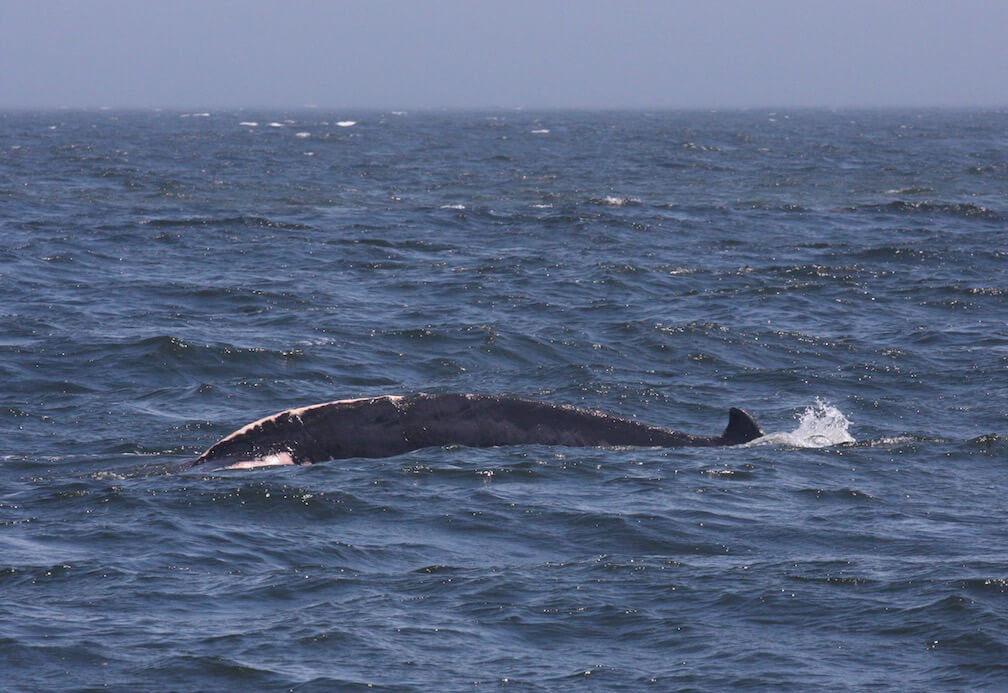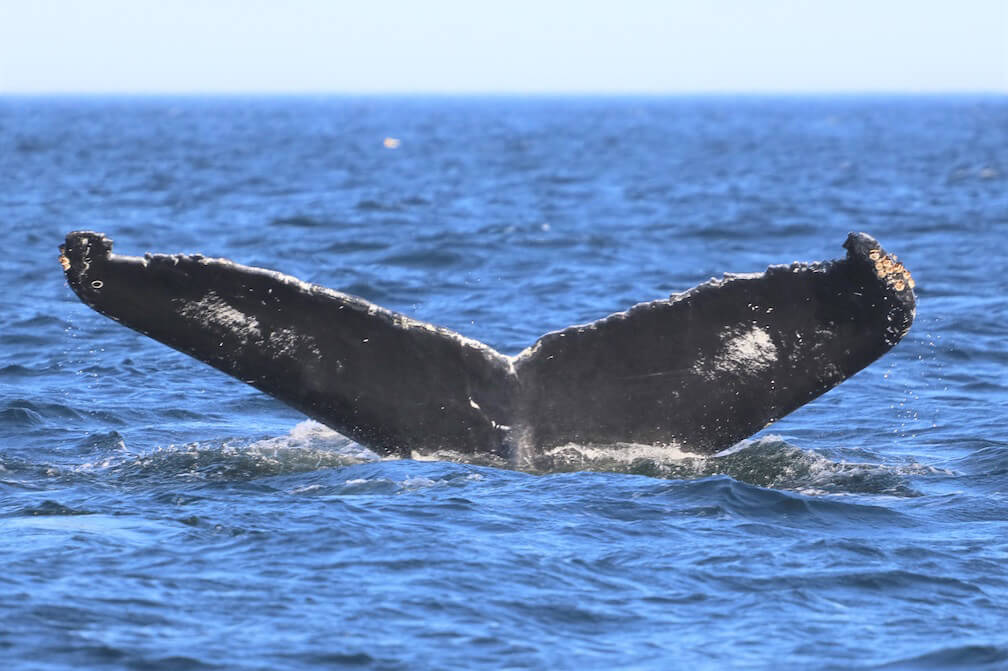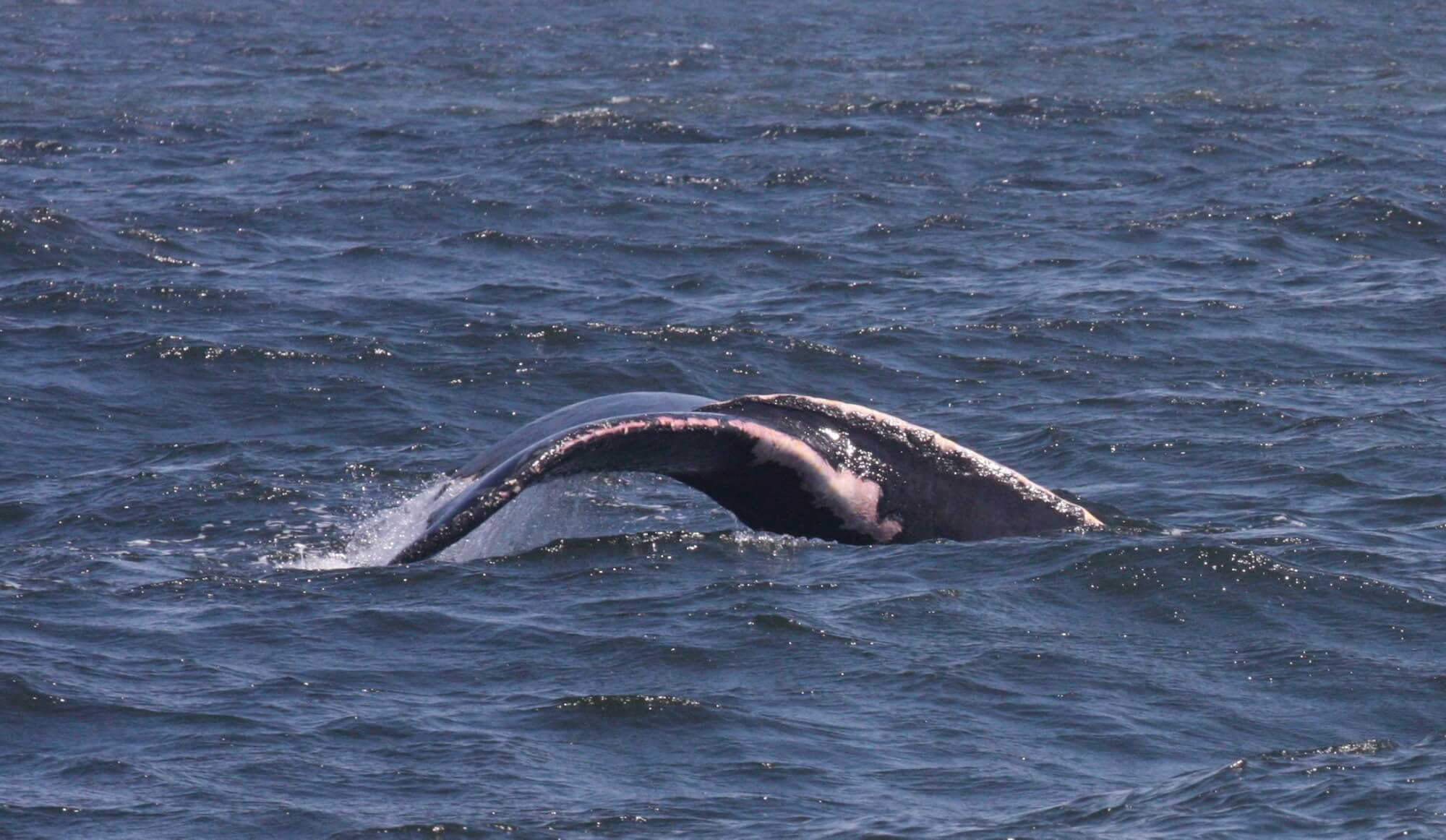The resilience of whales never ceases to amaze us! By analyzing photos taken in the summer of 2018, the Mingan Island Cetacean Study (MICS) team succeeded in identifying whale H710, a.k.a. Snowball. This female had been spotted on June 8, 2017 entangled in the ropes of crab traps and had not been seen since.
The case of Snowball kept the Quebec Marine Mammal Emergency Response Network in suspense on June 8, 2017. MICS researcher David Gaspar was offshore at the entrance to Gaspé Bay when he spotted a humpback with two buoys and a bunch of ropes in tow. The whale dives and rises without the two buoys, but is still ensnared in the rope.
The researcher dials 1-877-7baleine to report the incident. In the absence of appropriate equipment and for safety reasons, the crew is unable to help the whale. He documents the situation as best he can to provide expert teams with the information they’ll need for a future response.
At the same time, a crew from the whale-watching outfitter Croisières Baie de Gaspé also photographs the animal and observes its condition. The humpback whale is moving slowly, but manages to swim freely and breath correctly.
On the other side of the St. Lawrence, Christian Ramp analyzes the photos he receives from the Gaspé. He identifies H710, a.k.a. “Snowball”, a female known since 2007 who is particularly fond of the Gaspé Peninsula. Her age is unknown and she has never been seen with offspring.
In Tadoussac, the Network team organizes a response. An entangled whale always represents a complex situation in which the animal’s well-being and the safety of responders must be prioritized.Since weather conditions in the Gaspé Peninsula have kept boats docked, it is impossible to consider a response the same day. But in New Brunswick, the Campobello Whale Rescue Team is ready to mobilize the next day if the animal is respotted. Unfortunately, despite research efforts, the whale is not seen again in the days that follow.
A Surprise Among the Photos
A little more than a year goes by. On July 4, 2018, MICS research associate René Roy photographed a humpback whale in the Gaspé Peninsula. White scars on both sides of her tail glimmer in the sun. A few months later, the MICS team examines the photos and identifies Snowball.
In the pictures, Snowball is no longer dragging any ropes. She appears to have managed to untangle herself. We can also see that her wounds have healed, sometimes leaving white marks. Cetaceans’ smooth, hairless skin appears to heal and scar at a similar rate as that of land mammals. Nevertheless, their ability to heal in a salty and often very cold marine environment is most impressive! Injuries inflicted by sharks or other individuals of the same species form scars that disappear after 7 to 8 months. Broader, deeper scars create deformations and pigmentation changes that seem to be permanent. Snowball will surely retain some traces of her entanglement. “In any case, she is healing well,” says Christian Ramp.
Entanglements: a Threat
Entanglement in fishing gear remains a threat to marine mammals. “In the humpbacks that we observe in the Gulf of St. Lawrence, about 80% of individuals show signs of entanglement. Therefore, a considerable proportion of the animals survive their entanglements. But what effects do these incidents have on individuals? If we consider right whales, we know that it diminishes their ability to reproduce,” explains Christian Ramp. “Preventing entanglements is very important.”
Photo-identification of this animal in the years to come may help us better understand the healing of skin lesions in humpbacks or their ability to reproduce following a run-in with fishing gear. If you observe a whale in difficulty, promptly dial 1-877-7baleine to notify the Quebec Marine Mammal Emergency Response Network.










